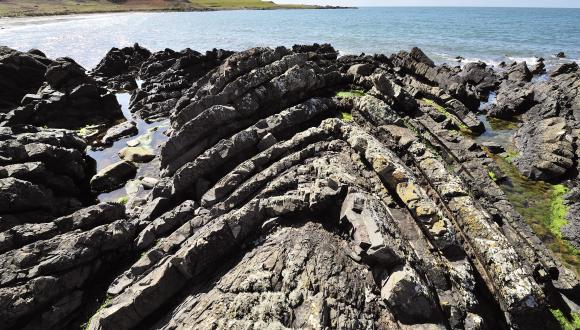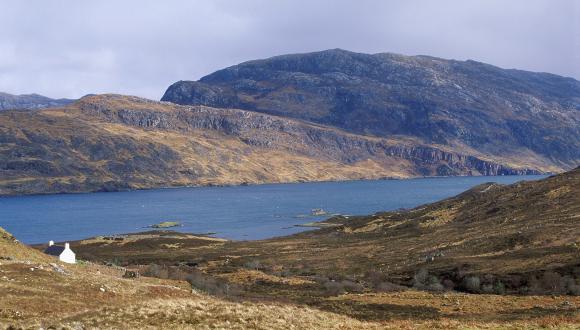Grampian Highlands: geological foundations
The Grampian Highlands were founded mainly upon rocks of the Dalradian Supergroup or Dalradian rocks, named after the ancient Scots kingdom of Dalriada.
Dalradian rocks were originally layers of sediment deposited 800 million to 500 million years ago at the edge of the Iapetus Ocean.
The rocks of the Grampian Highlands are bounded by the:
- Great Glen Fault (and the Walls Boundary Fault in Shetland) to the north-west
- Highland Boundary Fault to the south-east
Dalradian rocks
About 800 million years ago, immense forces broke apart an ancient continent, opening up the Iapetus Ocean.
Sediment was deposited at the ocean edge in water that would deepen from time to time due to movement on geological faults.
The Dalradian rocks, which formed from this sediment, include:
- sandstone and quartzites – from shallow water and coastal sands
- limestone – from lime chemically precipitated in coastal lagoons
- siltstones, mudstones, slate and shales – from silts, muds and clays in deeper water
Later, the Dalradian rocks were heated and compressed by the continental collisions that brought together Scotland’s foundations. Yet much of their original sedimentary structure is still visible.
Rare layers
Rare layers of volcanic rock also occur in the Dalradian rocks. These are related to the rifting of the ancient continent and the formation of a new ocean floor as the Iapetus Ocean grew wider.
There are also rock layers that contain rock fragments that appear to have been transported out to sea on rafts of ice. These suggest that up to three periods of glaciation occurred between 800 million and 500 million years ago.
Underlying rocks
The sediments that formed the Dalradian rocks must have been deposited on eroded older rocks.
Within the Grampian Highlands:
- Lewisian-like rocks occur beneath Dalradian rocks on Islay
- Moine-like rocks occur near the Cairngorms National Park’s northern edge
- areas of Moine rocks and Lewisian-like rocks occur east of the Walls Boundary Fault
These occurrences suggest that the Dalradian sediments were deposited on a landscape of eroded Moine and Lewisian-like rocks. But this is likely to have been hundreds of kilometres away from the Moine and Lewisian-like rocks that now form the foundations of the Northern Highlands.





